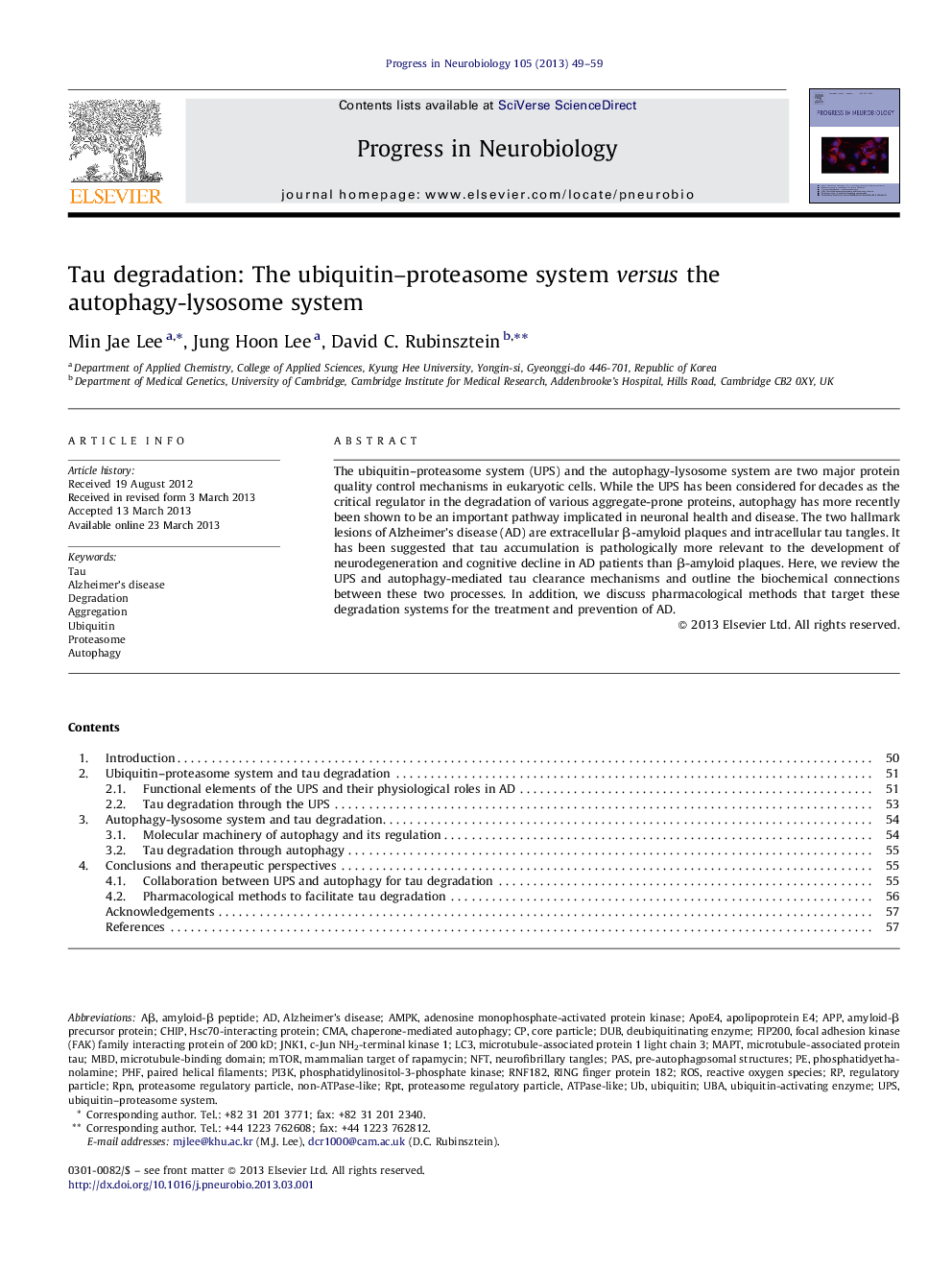| Article ID | Journal | Published Year | Pages | File Type |
|---|---|---|---|---|
| 4353389 | Progress in Neurobiology | 2013 | 11 Pages |
•Both the UPS and autophagy mediate tau degradation during AD pathogenesis.•There are mechanistic and functional links between the tau degradation pathways.•Their contribution to tau degradation during the progression of AD should be assessed.•Pharmacological methods have been developed to facilitate tau clearance.
The ubiquitin–proteasome system (UPS) and the autophagy-lysosome system are two major protein quality control mechanisms in eukaryotic cells. While the UPS has been considered for decades as the critical regulator in the degradation of various aggregate-prone proteins, autophagy has more recently been shown to be an important pathway implicated in neuronal health and disease. The two hallmark lesions of Alzheimer's disease (AD) are extracellular β-amyloid plaques and intracellular tau tangles. It has been suggested that tau accumulation is pathologically more relevant to the development of neurodegeneration and cognitive decline in AD patients than β-amyloid plaques. Here, we review the UPS and autophagy-mediated tau clearance mechanisms and outline the biochemical connections between these two processes. In addition, we discuss pharmacological methods that target these degradation systems for the treatment and prevention of AD.
